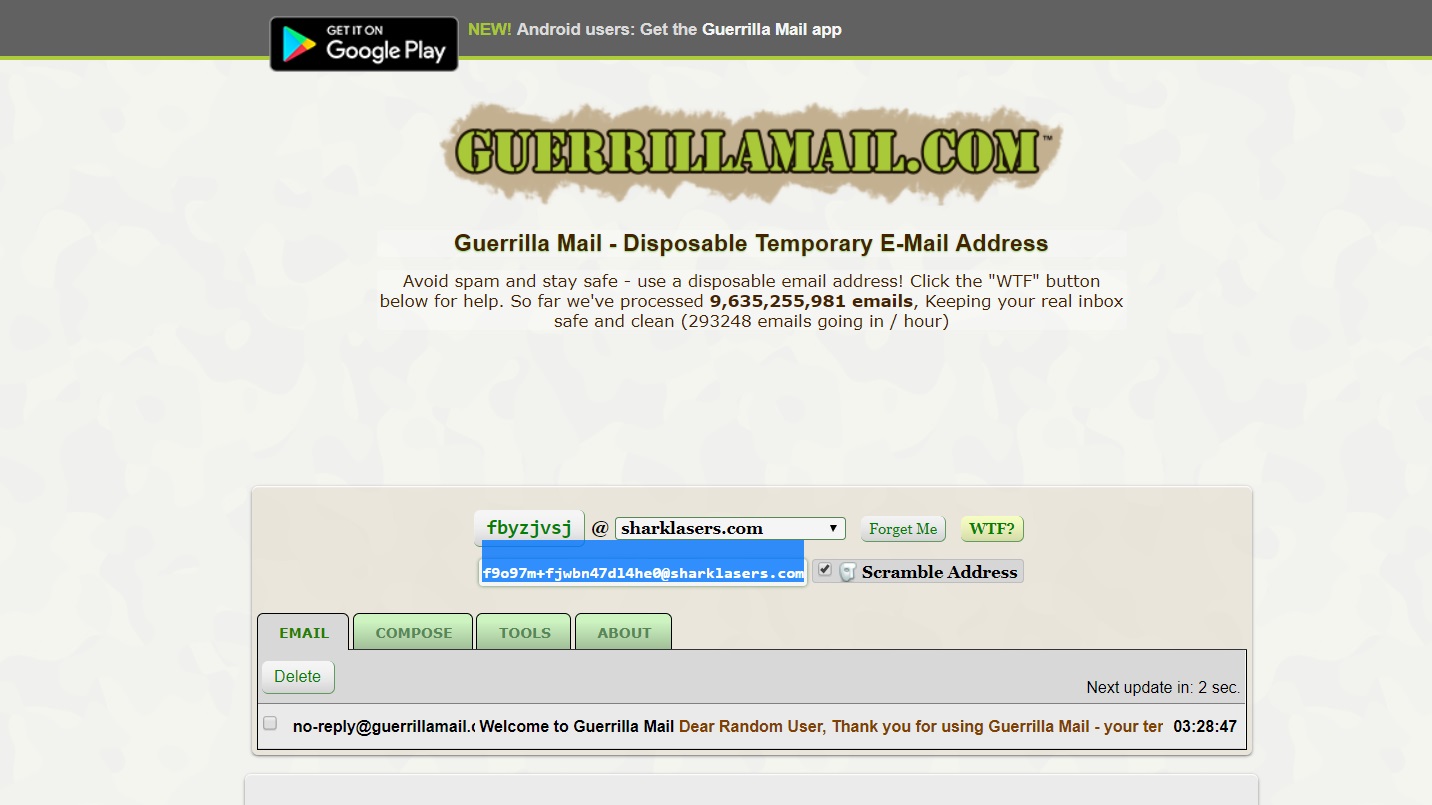How To Create A Hidden Email Account
How to create an anonymous email in 3 steps
An important tool for keeping yourself protected online

Any internet user has an email account these days, and it remains a common tool for both personal and business communication. Email accounts are free from a variety of providers, such as Google, Hotmail and Yahoo, and use your email account to offer up additional services, such as an integrated office suite or cloud storage service.
However, the phrase "If you're not paying for the product, you are the product," would definitely apply in the case of free email. Companies easily give away free email accounts to anyone that asks by the truckload for eager users, however, the big email providers do this to identify users, and build online profiles, which starts by searching their email communications.
In fact, parents of school age children that have Gmail addresses for school Chromebook use have been expressing concern about use of "Personal details from their children's school email to build more powerful marketing profiles of them as young adults," as reported in The New York Times last year. While there is little expectation of privacy on the internet, web-based email might just as well be public.
- We've also highlighted the best email service providers of 2018
More than encryption
There are already options for encrypting the message, which will make it scrambled, and therefore considerably more difficult to read. This is hardly James Bond kind of stuff, as enterprises does this commonly, and it is supported in the business stalwart program, Outlook. Encryption is also supported for Gmail, but interestingly for G Suite for Enterprise, and G Suite for Education, which are both paid offerings, by enabling hosted S/MIME, but not for personal Gmail accounts that most personal users have. Personal Gmail accounts can be secured via third party extensions, such as FlowCrypt which works in the Chrome browser.
Still another option for encrypted email is ProtonMail. This Swiss based email provider promises secure communications, and they are the same folks that do the popular VPN,ProtonVPN.
While message encryption will secure the contents of the message from being intercepted, the limitation is that it does not create an anonymous email. In other words, it can be easily identified which account sent it.
Stepping up the anonymous game

Step one: VPN
The foundation to taking back some privacy on the internet is by applying a VPN. This is a Virtual Private Network, that creates online privacy through an encrypted tunnel that keeps all communication secure, and away from the data analysis of your internet service provider.
Emails can be identified as to which IP Address they originated from. A VPN, through the encrypted tunnel, does an excellent job of securing that IP Address, and securing it. In fact, through VPN technology, you can even appear to have an IP Address in another country.
Finally, not all VPN's are equal, and therefore choose your VPN provider carefully. While there are free VPN's, just like the free email providers, to preserve anonymity, users are better off passing on those, and going with a paid VPN provider, that has a vested interest in keeping their users private, and not just making a quick buck off selling personal data to keep themselves afloat.

Step two: Use a more private browser
Using the internet requires using a browser these days. The problem is that our browsers are filled with all sort of tracking cookies, from the likes of Google and Doubleclick. Sure, you can clean out those cookies with anti-malware software, but they just reaccumulate as fast as they are whacked out, like barnacles on the bottom of a boat.
Furthermore, most browsers offer a private browsing method, called by various names, such as 'Private Window' in Firefox, or 'Incognito Window' in Chrome. However, this creates a separate tab, and the browser does not keep the history of the sites visited, but other than on the computer, there is no anonymity anywhere else, and an email could still be easily tracked back to the IP Address that sent it. Better to use a browser that is designed for privacy from the ground up, rather than creating a false sense of security via such a browser based private mode.
Check out Tor, which is designed to keep a user anonymous online by sending their data through several anonymous servers before it reaches its destination. Tor incorporates the concept of 'onion routing' which is layers of anonymity as the data passes through multiple servers. Rest assured this is a successful strategy that was developed by the United States Naval Research Laboratory for secure US intelligence communications in the mid-1990's.
Combining a VPN, with Tor offers the best combination for anonymity online. The VPN servers to anonymize the exit node from the Tor browser, the last node before the data goes beyond the anonymization process, and transitions to general web traffic.

Step three: Use anonymous email
Now that we have cloaked our IP address via the VPN, and are using a private browser, via Tor, the goal is to send the email. This represents another challenge, as if the user goes right into their everyday Hotmail or Gmail account, there again will no anonymity, and the first two steps will be done for naught.
Rather, the goal should be to use a disposable email account. One way to accomplish this is to set up a different account with one of the major providers, but the stumbling block is that they ask for a phone number so the account can be verified. Workarounds exist for this, such as creating the account for an under 15 year old to bypass the phone requirement, or getting a disposable cell phone, or burner phone, for such the occasion, but neither is exactly elegant.
An easier method is to use an email service that is dedicated to privacy, with a disposable, temporary email address. Some examples of this include Nada, Temp Mail, and Guerilla Mail. These services provide a way to send an email via a self destructing address. They are often used in scenarios where folks need to supply and email address, such as to register a product, but do not wish to receive spam email.
These services provide a self destructing email address, so that after the email is sent, a short while later, the email address no longer exists. Guerilla Mail also is available as an app for Android for convenience.
- Also check out our guide on how to stay totally anonymous online
How To Create A Hidden Email Account
Source: https://www.techradar.com/how-to/how-to-create-an-anonymous-email-in-3-steps
Posted by: ramergoope1995.blogspot.com

0 Response to "How To Create A Hidden Email Account"
Post a Comment